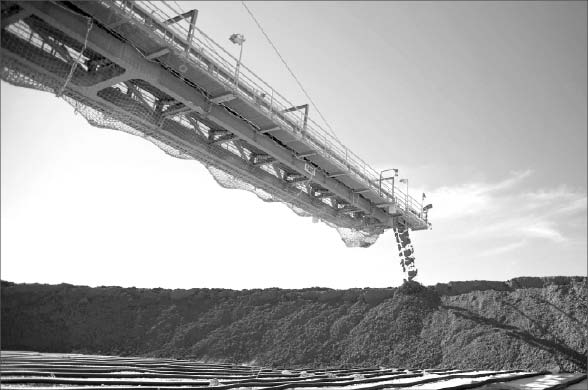BHP Billiton (BHP-N) and Rio Tinto (RIO-N) are feeling optimistic about copper. Six weeks into the first quarter of 2012, the two mining giants have unveiled plans to commit over US$4 billion to expand copper production at operations in Chile and Arizona.
At the Escondida copper mine in Chile’s Region II, 170 km southeast of Antofagasta, 57.5% owner and operator BHP will spend US$2.6 billion on a pair of projects to fuel production increases over the next decade. Rio Tinto will cover US$1.4 billion from cash flows generated through its 30% stake in the operation. The balance will be covered by Japanese consortium Jeco, which holds a 12.5% interest, and the World Bank’s International Finance, which owns another 2.5%.
The improvements include spending US$3.8 billion to replace a concentrator with a plant processing 152,000 tonnes per day, allowing higher-grade ore access, a US$721-million dynamic leaching pad and mineral handling system to maintain oxide-leaching capacity. Construction will begin in late February with completion expected in mid-2015.
Production at Escondida fell last year after labour strikes and lower grades. The mine produced 599,522 tonnes of copper during the first nine months of 2011, down 25.4% from 803,319 tonnes of copper during the same period in 2010.
BHP and Rio expect improved output in 2013 as work in the main pit allows access to higher-grade ore. According to a BHP statement, copper production at the mine should exceed 1.3 million tonnes per year within four years.
A brownfield exploration program has increased Escondida resources by 17% and reserves by 25%. According to BHP Base Metals president Peter Beaven, the results suggest that current production levels could be sustained for more than a century.
In Arizona, BHP will spend another US$195 million to revive its fully owned Pinto Valley copper-molybdenum mine, east of Phoenix near Miami. Operations were closed in 2009 owing to low copper prices during the global financial crisis.
Production at Pinto Valley is scheduled before next year, with an expected 60,000-tonne annual capacity of copper in concentrate.
The mine will boost the economy of the Globe-Miami area in central Arizona. Wayne Isaacs, president of BHP Billiton’s North American properties, says that BHP will be “hiring more than six hundred new team members, and we look forward to working with the local communities to safely restart the mine.”
The Escondida investment follows Rio’s US$299-million acquisition of a majority stake in Ivanhoe Mines (IVN-T, IVN-N) in late January. The acquisition increased Rio’s commitment to the Oyu Tolgoi copper-gold mining project in Mongolia.
The first ore is expected to be mined at Oyu Tolgoi in this year’s second half, with commercial copper concentrate production before July 2013.
Robust manufacturing performances in the U.S. and Japan, combined with record Chinese copper imports to start the year, have contributed to optimism among copper miners that industrial demand will prop up copper prices.
BHP says it remains positive on the long-term outlook for the global economy. Urbanization and industrialization in China, India and other emerging economies are expected to underpin global growth and robust commodities demand.
Copper prices recently fell from a 5-month high in early February, but remain up 11% through the first six weeks of 2012. Lingering uncertainty about the European Union debt crisis and lagging Chinese imports following the week-long Lunar New Year holiday in January have contributed to downward pressure.
A February base-metals update issued to clients by CIBC institutional analysts states that “we are five months into a sustainable rally in copper prices and expect equities to outperform the commodity in the first half of 2012, should this relationship hold.”
BHP shares have increased 10% since the new year, jumping from US$69 per share in New York to US$76 on average trade volumes exceeding 3 million shares per day. Rio shares have increased 17% over the first eight weeks, rising from US$49 per share to US$57 in mid-February.


Be the first to comment on "BHP and Rio double down on copper"